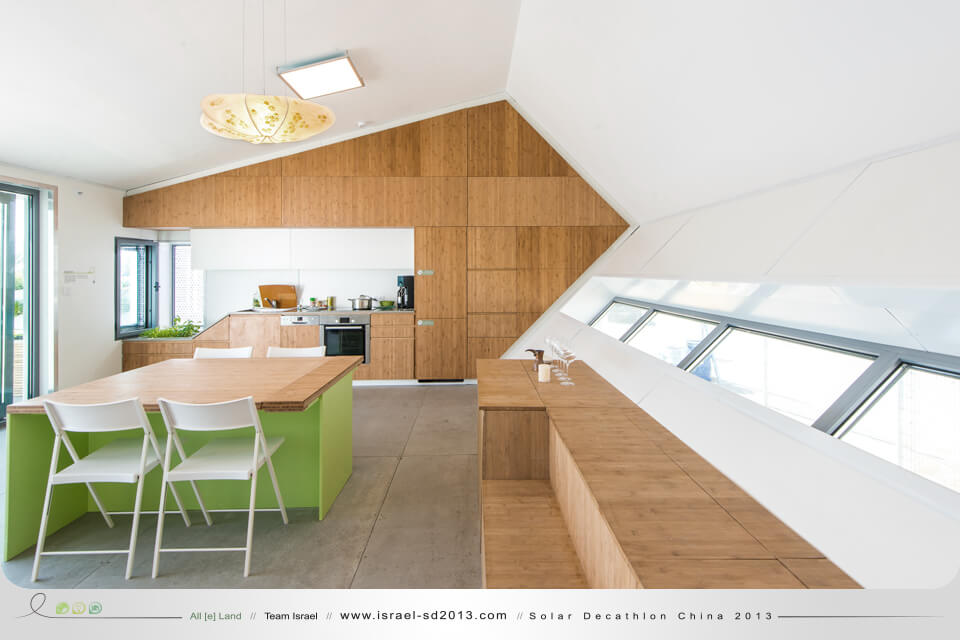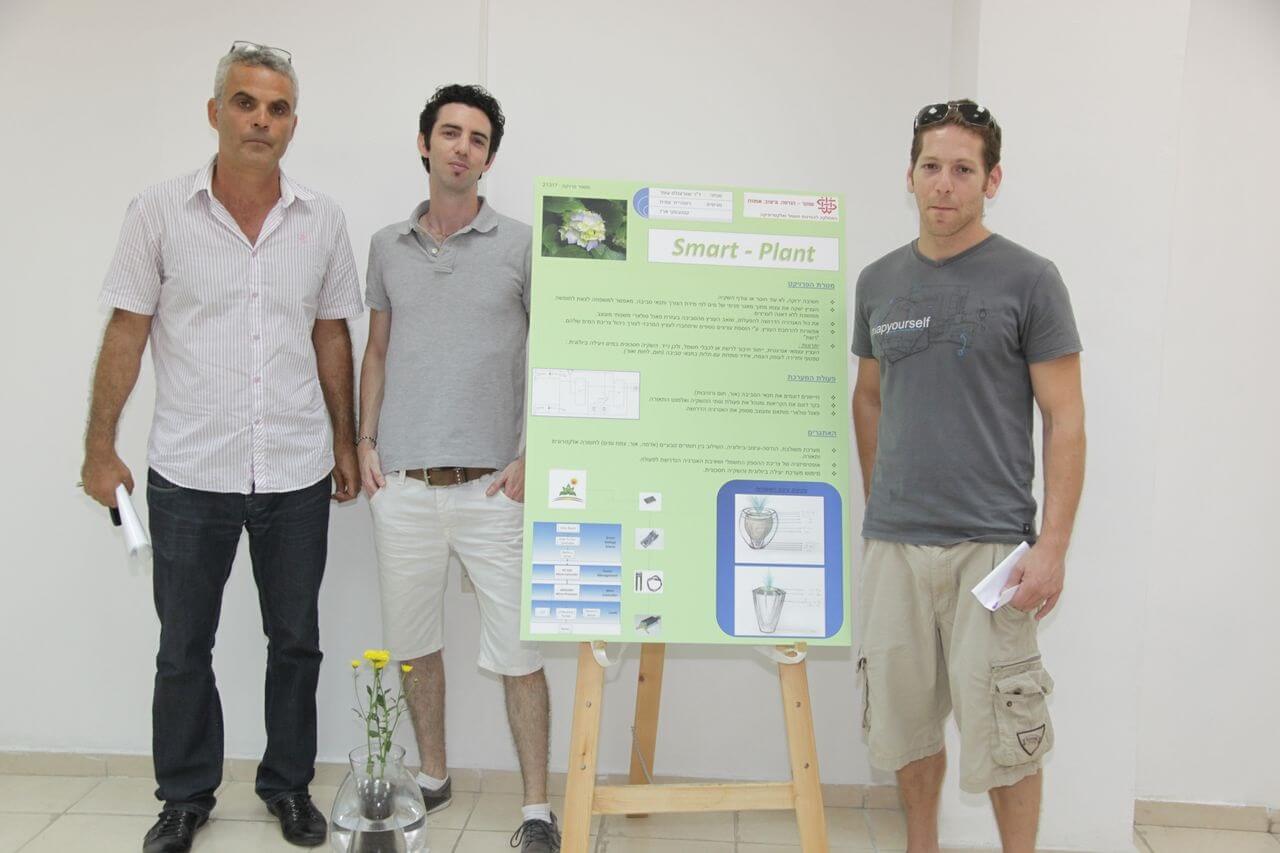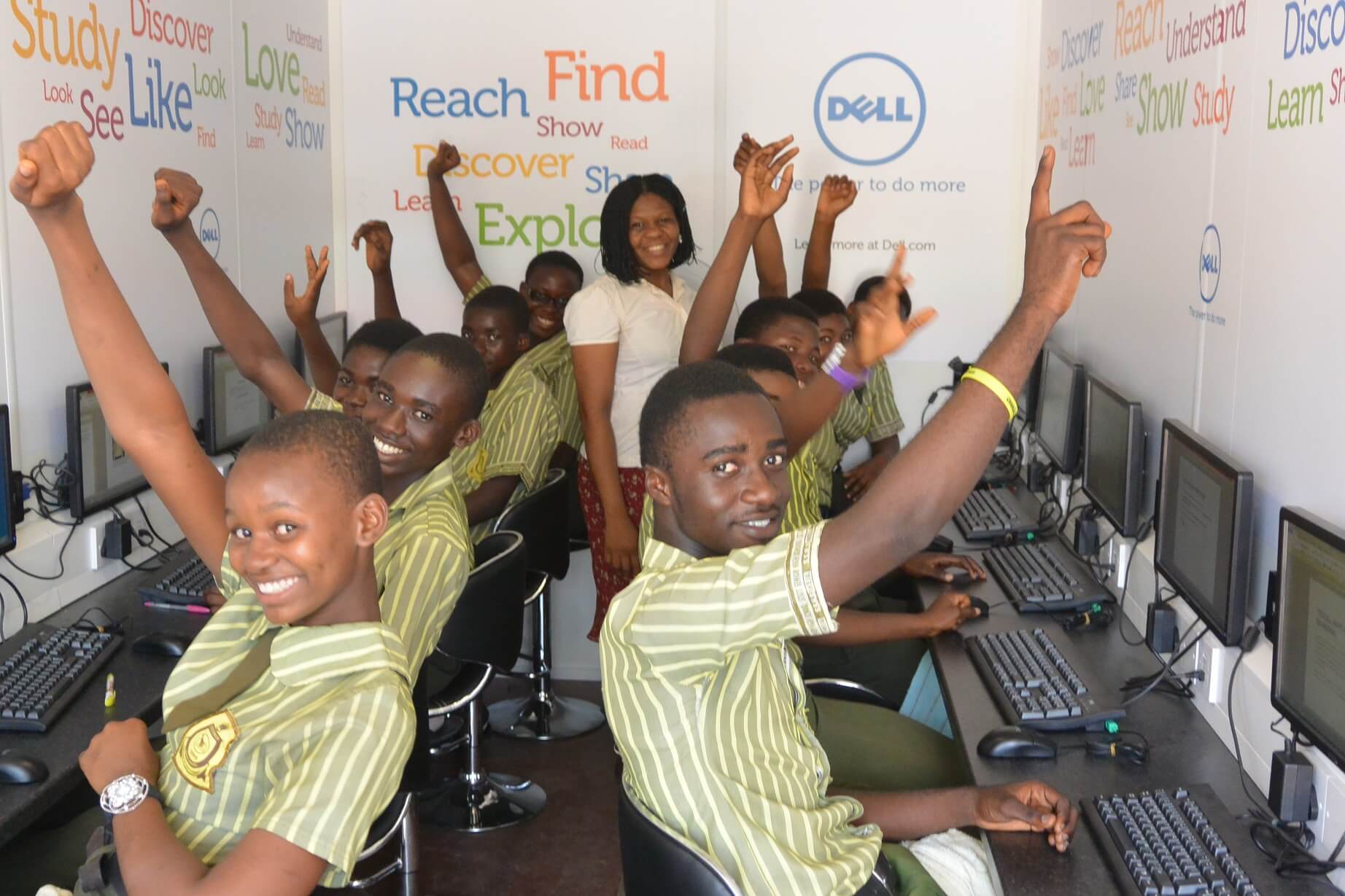The Israeli team won a high score in the Solar Decathlon green competition held in China * came in second place in the competition for structural architecture and fourth place in the overall competition

A team of about 30 students from Israel that participated in the green and prestigious Solar Decathlon competition held in China, won a high score and came in second place in the competition for structural architecture and fourth place in the overall competition.
The Israeli delegation included the Porter School of Environmental Studies at Tel Aviv University, Shenkar College, the College of Management and the Witzo Academic Center
The competition is a kind of 'green construction world championship'. The Israeli team was among the 20 countries that managed to qualify for the final stage, and presented their special projects: green houses that produce more energy than they consume. The first three places were won by the delegations of Australia, China and Sweden, with a small margin of votes.
The Israeli delegation, led by Dr. Yossi Kuri, one of the designers of the green building of the Porter School of Environmental Studies, and the architect Chen Shalita, designed and built a smart and modern house, which is based on the ancient Israeli house model - the 'House of the Four Spaces' - known from archaeological excavations throughout Country. The innovative house is built from ecological materials, and is equipped with a variety of advanced technological systems made by Blue and White. Among the innovations: window panes that contain photovoltaic cells and generate electricity; A particularly efficient thermo-solar system - for heating water even on the coldest days; A ground-breaking air conditioning system that cools with the help of solar energy; And thin-walled steel that makes it possible to assemble the skeleton of the structure in two days - just like Lego, with a huge saving in time, labor and money.
"A house like this proves that green is economical - really affordable housing, in the most recent sense of the word," says Dr. Corey. "It is a modern and designed building of 85 square meters, cheap to build and comfortable to live in, healthy and economical, sealed and well insulated, and even resistant to earthquakes. More than that: such a house can easily double its size with the growth of the family, and later be reduced according to changing needs."
At the end of the competition, the Israeli building will return home, and will be presented here as a model for sustainable construction, for the development of green construction in our country.
The Solar Decathlon, a competition between leading academic institutions all over the world, is currently considered the most important international competition in the field of green architecture. In fact, this is the Olympics of the future generation in world architecture, which brings with it the forefront of green construction technology. The 2013 event, the eighth in number, was jointly organized by the US and Chinese Departments of Energy.
IBM's research laboratories have developed an analytical system for predicting the production capacity of electricity systems from renewable energy
IBM unveils a first-of-its-kind system for analytical forecasting of electricity generation capacity in systems based on renewable energy. The system combines Big Data analysis with weather forecasting models, to provide an early forecast for the availability of electricity from renewable energy sources - wind energy and solar energy. For this purpose, the system uses cloud imaging and photography technologies that allow tracking the movement of clouds in the sky, in combination with sensors integrated in wind turbines, measuring temperatures in different layers of the atmosphere, and other data. Analyzing these huge amounts of data with the help of analytical technology, it is possible to estimate the amount of electricity that each wind turbine can provide and to plan the production of electricity from fossil energy in the most efficient way, without wasting fuel.
The new system, developed in IBM's research laboratories, under the name "Hybrid Renewable Energy Forecasting", ("HyRef") and is already operating in a production facility of the Electric Company of Zengbei Province in China, where it is expected that it will allow a 10% increase in the scope The generation of electricity from renewable energy, at the expense of burning carbon fuel.
According to Oded Cohen, vice president of BMW and director of the research laboratory in Israel, the new system demonstrates the combination of technological components capable of advancing the world in areas critical to its existence. "The ability to absorb data from the environment, communicate and gather it and then predict its future behavior, using models and past data - is a key to solving existential scarcity problems such as the lack of food, water and perishable resources," says Cohen. "The application of analytical tools for Big Data analysis will allow electricity producers to deal with the production fluctuations of renewable energy-based systems, and to predict more accurately than ever the availability of electricity from wind turbines and solar electricity.
The system that combines weather forecasting and the forecasting of the demands of consumers using the electricity network can improve system availability and optimize the performance of the network and the various means of production," adds Cohen.
The current project relies on tools developed as part of an IBM project at the Danish energy company Vestas. IBM's analytical analysis tools allow the Danish company to crack vast amounts of meteorological information and weather data, the state of the moon and tide times, combined with data from satellite photographs. In this way, it is possible to locate in the most precise way the suitable points for placing wind turbines to generate electricity, and to improve the current output of these turbines. Analytical analysis, which used to take weeks, now requires less than a single processing hour. As a direct result, operations that were impossible in the past are now becoming a daily matter. At the same time, IBM also incorporates in the new system knowledge and calculation methods developed in a flood forecasting project, which was born in IBM's research laboratories. In this framework, local government bodies and rescue and emergency authorities can build preparedness plans and indicate with a high level of accuracy the points prone to flooding and damage.
IBM is currently involved in more than 150 projects around the world in the field of power grids and smart power systems, both in developed and developing markets.
The electronic pot: Shankar's pot will be powered by a solar panel, water itself and save you money

Flying abroad and worried about the fate of the pots? No more. As part of the presentation of the year-end projects in the electronics engineering department in Shenkar, the students Amit Rotheiser and Erez Kaganovski, under the guidance of Dr. Ofer Schwarzglas, head of the department, developed an independent electronic flowerpot. The pot, powered by a solar panel, waters itself exactly as needed, no less and no more. Because the flowerpot is 'energy independent', meaning it draws all the energy needed to operate it from the environment, it is portable and can be placed anywhere in the house or outside it without connection to the electricity grid.
How It Works? Each pot has two sides, one contains the plant and the soil and the other, which is separated from the first and wraps it, contains the irrigation water that is filled in advance for a long period. The pot releases the water into the soil at a rate adapted to the degree of soil moisture.
When the water reservoir is empty, a light comes on to remind you to fill it up again. The humidity sensors and the lighting regulators are activated by electrical energy that is drawn from the sun's rays by a solar panel that is installed on the planter at its base or on the surface of the reservoir.
The pot was designed by a graduate of the Industrial Design Department at Shankar Ofir Zucker in two models, the artistic model, which is based on two transparent glass containers, one inside the other, which maximize the aesthetics of the water surrounding the earth and highlight the dynamics between natural materials (plant, soil, water , light) to artificial ones (menstruals, irrigation tubes, glass and lighting). In addition to the beauty of revealing the layers of the pot, the transparency allows you to see how the pot "works", and when there is a lack of water. In this design, the solar panel is located at the bottom, next to the pot battery. On the other hand, the design of the high-tech pot conveys the technological innovations inherent in the product, with the solar panel highlighted in the upper part, and a strip of LEDs illuminates the plant as if it were a product in itself.
The sensors and actuators are placed in such a way that the irrigation seeps into the soil in several dimensions, into the interior of the pot and not only on its surface, therefore the irrigation is water-saving and significantly more efficient than normal irrigation, due to reduced evaporation, negligible dependence on the ambient temperature, penetration into the depth of the plant's roots, and depends on the moisture of the soil substrate .
"This is a smart development, based on the integration of existing technologies, arranged in a way that improves the daily procedure of watering flower pots. The solar planter prevents the pots from drying out during a prolonged absence of the homeowner, prevents water wastage when the amount of water will be exact for the plant's needs, and prevents over- or under-watering that could cause damage to the plant," explains Dr. Ofer Schwarzglass, head of the electronics engineering department at Shankar.

Dell donated a solar classroom in Nigeria
Dell today launches the solar-powered ZubaBox mobile classroom in Nigeria, providing technology learning opportunities for students with little or no access to technology and the Internet.
The ZubaBox classroom, equipped with an innovative joint computing solution from Dell and Wyse, and due to the elimination of the need to connect to electricity, opens up new learning possibilities for students in developing countries, especially in rural areas, which have limited, if any, access to electricity and the Internet.
Thanks to the solar panels installed on the roof of the ZubaBox classroom, it can be placed almost anywhere, eliminating the need for a permanent electrical infrastructure. In terms of energy, each of the workstations requires only three watts, which makes it particularly efficient. In addition, the solar energy stored during the day is stored in dedicated batteries that enable lighting after dark if necessary.
Based on announcements from Tel Aviv University, Shankar College, IBM and Dell
